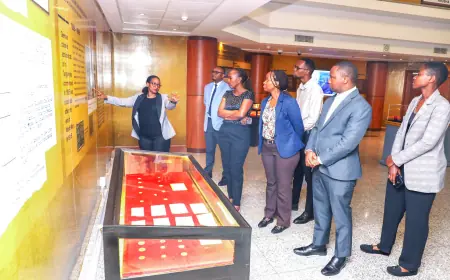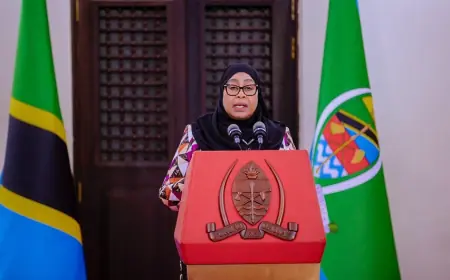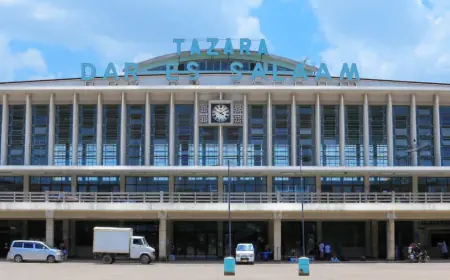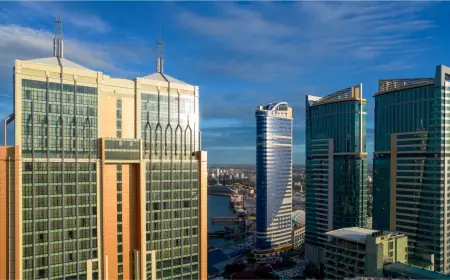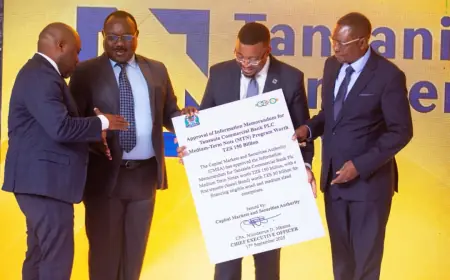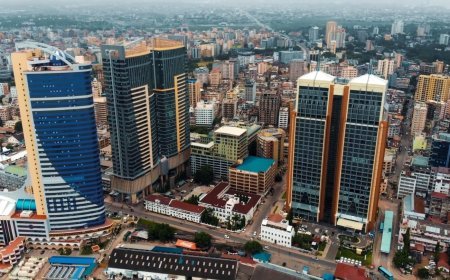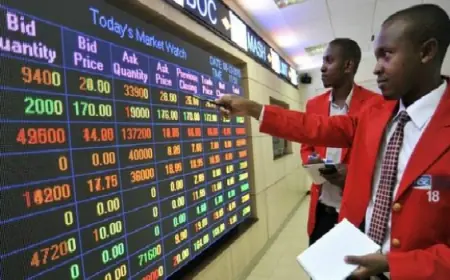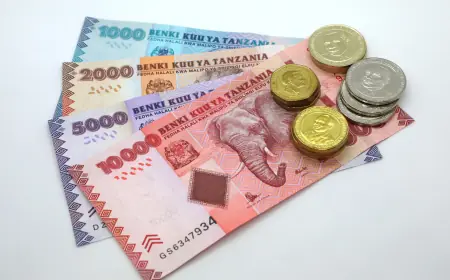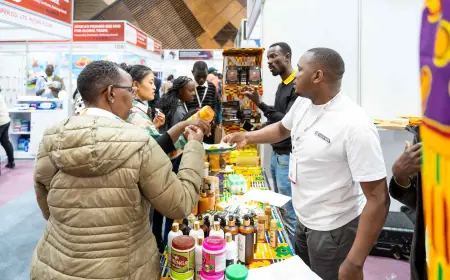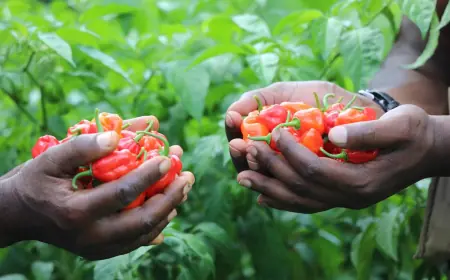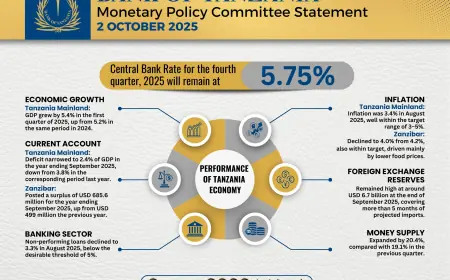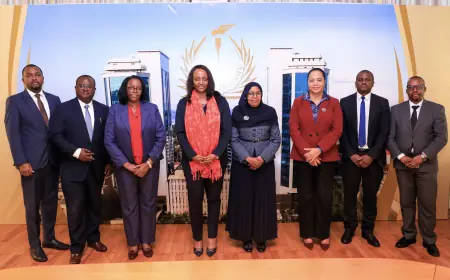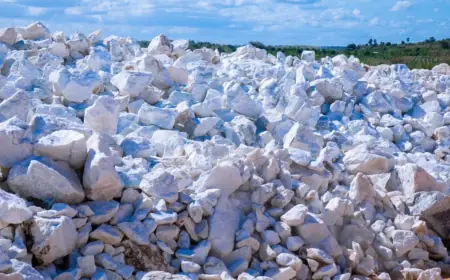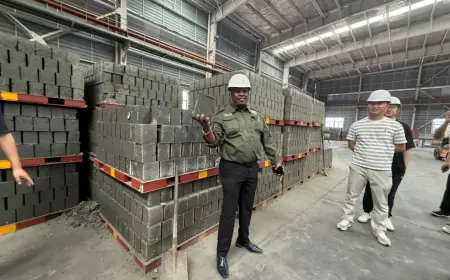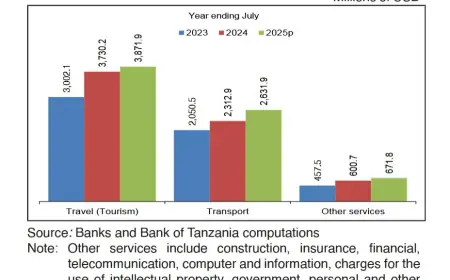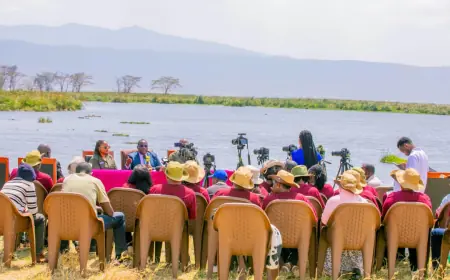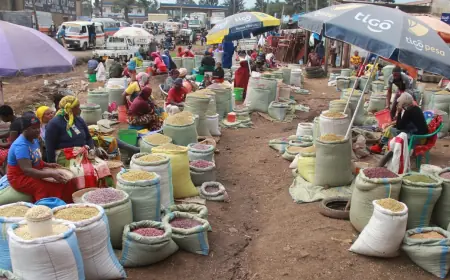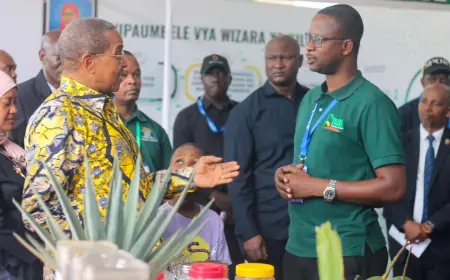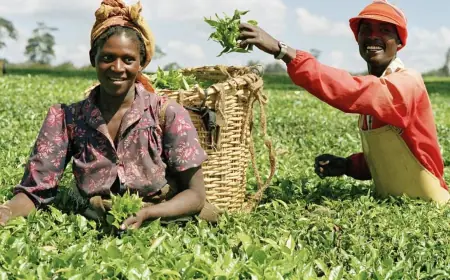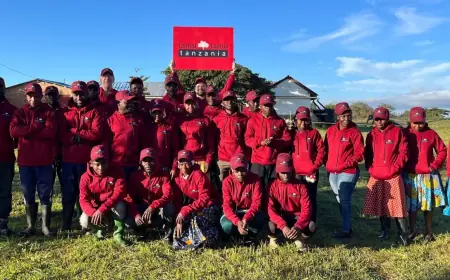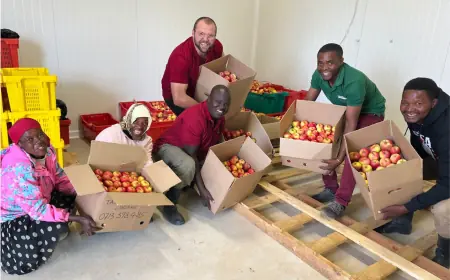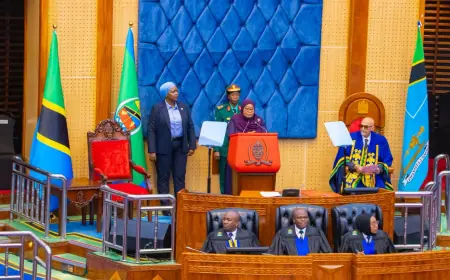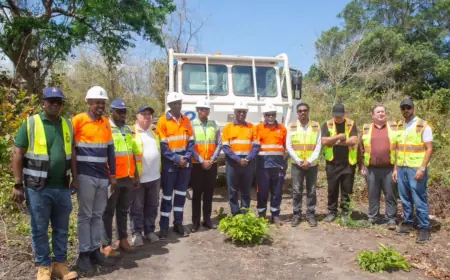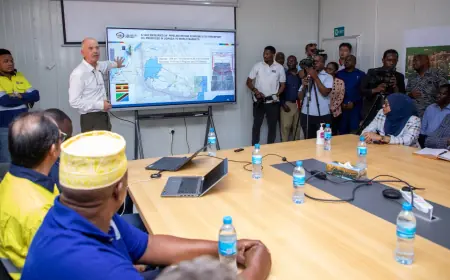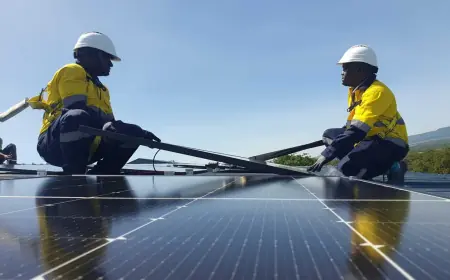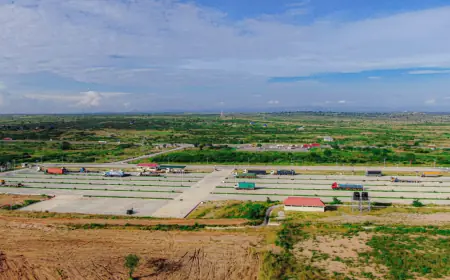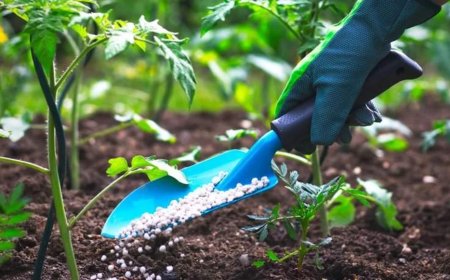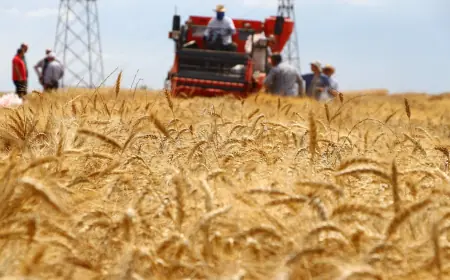Tanzania: Revival of limping sisal sector gains traction
The revival of sisal farming, particularly in the Tanga region, has sparked an air of enthusiasm reminiscent of the golden days of the crop in the 1960s and 1970s when it was the country's primary foreign exchange earner
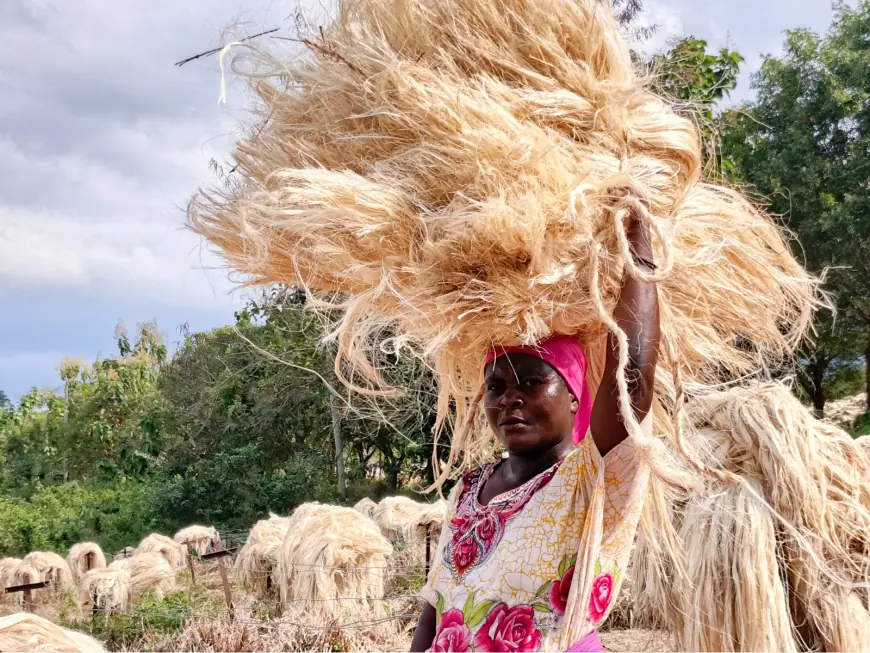
Strategies to revive sisal production in Tanzania are paying dividends as the number of investors and output have increased in recent years, complementing abundant opportunities in the cash crop value chain.
The revival of sisal farming, particularly in the Tanga region, has sparked an air of enthusiasm reminiscent of the golden days of the crop in the 1960s and 1970s when it was the country's primary foreign exchange earner.
Back then, sisal fibre production averaged an impressive 200,000 metric tonnes annually (now 56,000), making it one of the leading contributors to the nation’s economy.
However, the three decades that followed, beginning in the late 1970s, witnessed a steady decline in the industry, nearly wiping the crop off the Tanzanian agricultural map. This was caused by among other reasons, the emergence of cheap imported synthetic fibres and plastic-made bags.
Today, a visit to the rolling hills of Korogwe, Handeni, Muheza, and other districts across the country reveals a different picture. Sisal fields stretch as far as the eye can see, the plant's lance-shaped, dark-green fleshy leaves painting the landscape with promise.
Decorticators—some over 60 years old—hum with activity as fibres roll off the machines. Sisal is reclaiming its place as Tanzania’s “white gold,” symbolising hope for an industry once on the brink of extinction.
According to the Tanzania Sisal Board (SBT), the total area planted with sisal increased from 2,137 hectares in 2014 to an impressive 8,176 hectares by 2023.
Production of sisal fibre also saw a notable rise, with output growing from 38,471 metric tonnes in 2014 to 56,733 metric tonnes in 2023.
The export value of sisal fibre followed suit, surging from $28.43 million in 2014 to $62 million in 2023.
This resurgence has brought more than just economic gains; it has also created significant employment opportunities. SBT statistics indicate that jobs related to sisal production grew from 313,728 in 2020 to 478,497 by 2023, with more than 50 companies now involved in various stages of the value chain.
This remarkable turnaround has breathed new life into communities across the country, revitalising the rural economy and offering livelihoods to hundreds of thousands of Families.
"Sisal's growth is remarkable, especially after the slump of the 1980s, which was largely due to the rise in the use of plastics," explains SBT’s Head of Sisal Development, Simon Kibasa.
"The demand for natural fibres like sisal started to surge again around 2011 as the world sought more sustainable and eco-friendly alternatives."
Sisal fibres are now in high demand, especially in global industries producing gypsum boards, construction beams, fibreglass, dashboards, and elevators.
Between 65 and 70 percent of Tanzania’s sisal production is exported to meet this growing global demand.
Kibasa further highlights that while Brazil remains the world’s largest sisal producer, with an annual output of between 80,000 and 100,000 metric tonnes, Tanzanian sisal is considered to be of superior quality, and regarded as the finest in the world.
The current situation shows that investors are concentrated on farming and fibre production while manufacturing of the finished products is still low as most investors focus on low-hanging fruits (fibre processing). TSB data show that production for finished products such as sisal twines, ropes, carpets, and bags has plummeted to 1841.68 MT per annul in 2023 from 8,500 in 2014.
Global Demand Surpasses Production
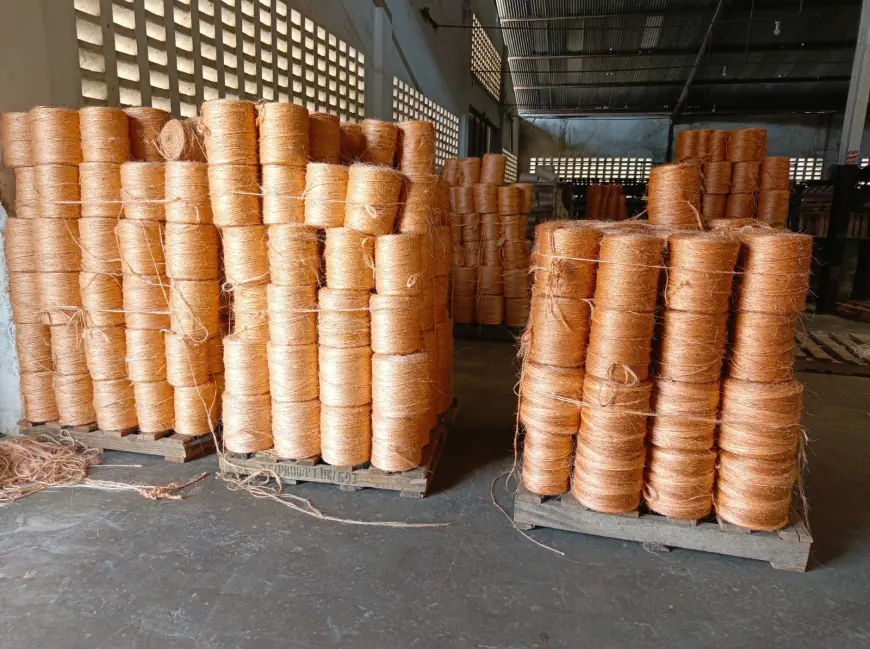
The global demand for sisal fiber currently stands at 600,000 tonnes per year. However, worldwide production falls far short, at just 235,000 metric tonnes. This demand is contributed by the increased use of sisal such as in the reinforcement of plasters during construction, beam structures, lift ropes, automobiles dashboards, sisal insulin for sugar production, Agave syrup for jams, and Agave spirits.
Tanzania, with its long history of sisal cultivation and favourable climate, is well-positioned to capitalise on this gap in supply. Currently, according to Mr. Kibasa, Tanzania is the second largest producer of sisal fibre after Brazil.
Despite the country’s potential, its annual production of 56,000 metric tonnes remains far below what it could achieve.
Kibasa acknowledges this shortfall: "Tanzania has the right geographical and climatic conditions to meet a much larger share of global demand. With the right strategies in place, we can significantly increase production and reap the benefits."
Strategic Plans to Boost Production
In response to the growing global demand, the Sisal Board has devised a series of strategies aimed at revitalising the Sisal cash crop by increasing production.
The government has set a target for sisal fibre output to reach 120,000 metric tonnes by 2025/26, a goal that Kibasa believes is within reach.
To achieve this, SBT has divided the country into seven zones to supervise sisal cultivation and boost production.
Currently, 25 agricultural estates are actively engaged in sisal farming across these zones. A total of 170,183 hectares have been allocated for sisal cultivation, with 67,000 hectares already planted.
"While Tanga, Morogoro, Coast, Kilimanjaro, and Arusha remain the traditional sisal-growing regions, we have expanded into new areas," says Kibasa in an interview with Doing Business Magazine. "Regions like Mtwara, Lindi, Manyara, Simiyu, Mara, Geita, Singida, Kigoma, Shinyanga, and Mwanza are now becoming key players in sisal farming."
Local district councils in these regions have made land available for sisal cultivation, further accelerating the sector's growth.
In addition, SBT is actively conducting awareness campaigns aimed at encouraging farmers to adopt sisal farming.
These campaigns are supported by productivity enhancement programs that aim to increase fibre yield from one to two tonnes per hectare.
One of the key players in these efforts is the Tanzania Agricultural Research Institute (TARI) Mlingano, which has been at the forefront of developing improved sisal varieties since 1934.
The most popular variety currently being grown is Agave Hybrid No. 11648, which has been specifically bred for commercial cultivation on porous soils.
This hybrid produces more leaves and, consequently, more fibres per plant, making it ideal for large-scale cultivation. Hybrid 11648 was released by Mlingano in 1960 and has since become common around the world in all sisal-producing countries.
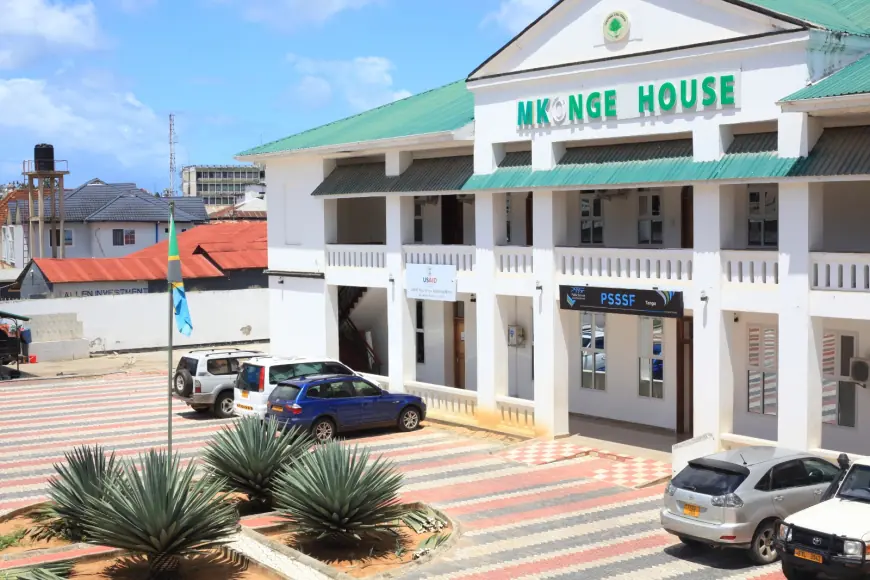
Increasing Domestic Demand
While the export market remains vital, SBT has also set its sights on boosting local demand for sisal fibre. Currently, only four percent of the sisal produced in Tanzania is consumed domestically, with the rest being exported. The board aims to raise local demand to 50 percent in the coming years, a move that could help reduce the country's reliance on foreign markets while spurring further industrial development.
To achieve this, the government is working on strategies to promote the use of sisal in a variety of local industries, from manufacturing to construction. The versatility of sisal, which can be used to make products ranging from ropes and mats to high-end construction materials, presents a significant opportunity for Tanzanian manufacturers to tap into.
John Jobaru who owns a logistics company says there is a huge demand for sisal-made packaging bags for cash crops such as cashews, coffee, cereals, and legumes. He says Sisal bags are also needed in big numbers by small-scale gold miners for the processing of gold.
“Last year I had a tender to supply 1,300 metric tones of maize to Uganda, I had to order 13,000 bags from India. We need to invest more in local production of sisal bags because it will help to curb the shortage,” says Mr. Jobaru.
A Bright Future for Sisal
The future looks promising for Tanzania's sisal sector. With strong global demand, an expanding domestic market, and a government committed to revitalising the industry, sisal is once again poised to become one of the country’s key agricultural exports.
Tanga Port
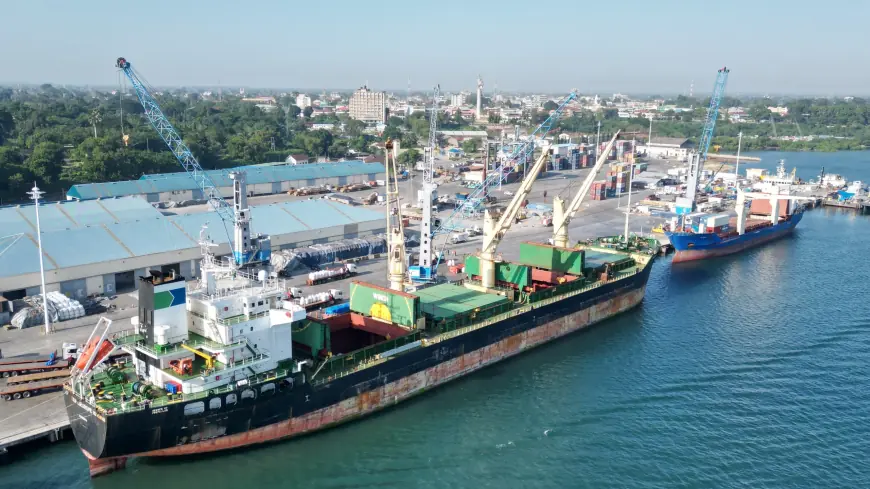
The revival of Tanga Port makes it easier to transport bulky sisal fibres to export destinations. For the communities involved in sisal production, this resurgence has brought renewed hope. The once-fading industry has now been reborn, offering a sustainable livelihood and a path to economic growth.
Expanding the Regulatory Functions of the SBT
Industry stakeholders are calling on the government to broaden the regulatory functions of the (SBT) to include oversight of fibre or plastic materials. These stakeholders argue that since the SBT already regulates the importation of jute bags, it would be fitting for the board to also be tasked with the regulation of plastic bag manufacturing and importation.
One key concern raised by stakeholders is the proliferation of synthetic fibres, particularly plastic ropes, which are sometimes misleadingly labeled as sisal ropes. This misrepresentation not only undermines the sisal industry but also contributes to environmental degradation.
"To begin with, the government must ban the production of synthetic fibers, especially plastic ropes, some of which are falsely branded as sisal ropes," a stakeholder told Doing Business Magazine in an interview in Tanga recently.
By expanding the SBT's mandate, stakeholders believe that stricter controls can be implemented to curb the negative environmental impact of plastic products, while also protecting the integrity of natural fibers like sisal. This move would support Tanzania’s broader environmental sustainability goals and promote the use of eco-friendly alternatives in various sectors.
Cooperative Unions and Sisal Production
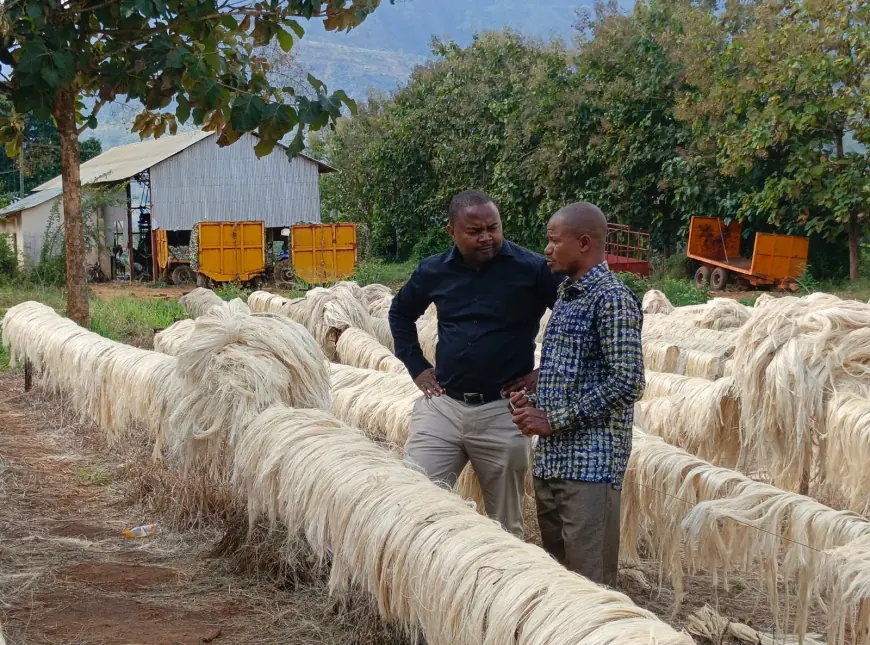
Sisal production in Tanzania has been significantly enhanced by the formation of cooperative societies, particularly the Agricultural Marketing Cooperative Societies (AMCOS).
These cooperatives operate across key sisal-growing regions, helping farmers organize and reduce the financial burden of production. By pooling resources, AMCOS plays a crucial role in streamlining operations and improving efficiency for small-scale sisal farmers.
One notable example is the Mgombezi AMCOS in Korogwe District, Tanga. This cooperative owns tractors used to transport large quantities of sisal leaves from farms to processing facilities, and it also provides decorticators for fiber extraction.
These shared resources help individual farmers overcome the logistical challenges and high costs associated with sisal farming and processing.
AMCOS also serves as a collective marketing platform. They pool processed sisal fibers from multiple farmers, which are then sold domestically or exported.
Payments for these sales are made directly through the AMCOS accounts, ensuring transparency and equitable distribution of earnings.
This structure allows small-scale farmers, even those with as little as four hectares of land, to access international markets—an opportunity that would be far more challenging without the support and coordination provided by the cooperative.
Through these cooperative unions, smallholder farmers benefit from economies of scale, enhanced market access, and increased bargaining power, ultimately contributing to the growth and sustainability of the sisal industry.
According to Hamis Mkotya, one of the farmers and newly elected Chairman of the Mgombezi AMCOS, the cooperatives face various challenges including a lack of capital to acquire agricultural mechanization tools and input, dilapidated machinery and infrastructures and dominance of one buyer (Mohamed Enterprises) who dictates prices of sisal leaf.
“When I came into power we had only one buyer who used to offer us low prices. Now we have invited Chinese companies who buy at much favorable prices,” says Mr Mkotya
What's Your Reaction?
 Like
0
Like
0
 Dislike
0
Dislike
0
 Love
0
Love
0
 Funny
0
Funny
0
 Angry
0
Angry
0
 Sad
0
Sad
0
 Wow
0
Wow
0





